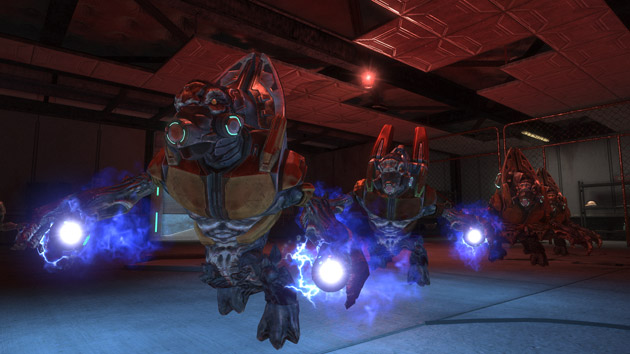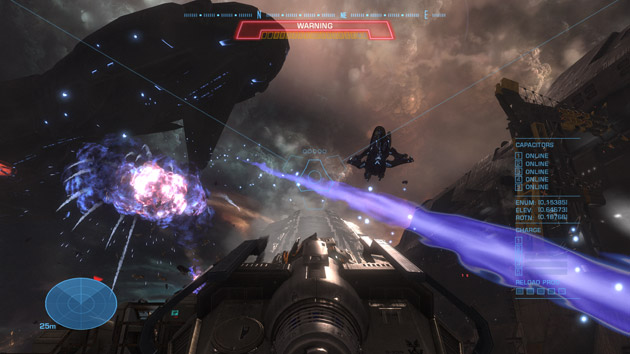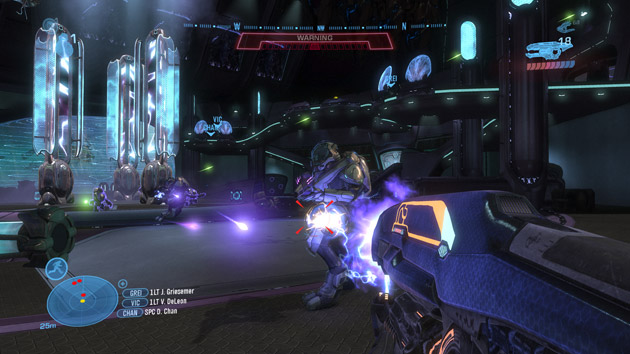
Is Halo: Reach the best Halo yet? Yeah, probably, but unlike when, say, Halo 2 came out, in 2004, it’s hardly the only good console shooter out there. You have choices now. Should you choose to Remember Reach? Let’s face it: you will and you will love every minute of it. Mostly.
Halo: Reach is the last game in what henceforth will be known as “the real Halo” series. Its developers, Bungie, responsible for the first three games in the series (let’s forget about ODST for a moment), will now move on to new and exciting projects, courtesy of Activision. (A Bungie-developed Call of Duty? I’d be shocked if that wasn’t discussed at some point.) So, Reach is very much a farewell, and not merely a goodbye, from the team that pretty much single-handedly brought online multi-player into our living rooms.
Be sure to thank Bungie for all its hard work.

What is Reach? It’s a prequel—thankfully not a rubbish one like all those Star Wars movies—to the first game, Combat Evolved. It’s Bungie’s attempt to say, “Remember all those Halo games we made? Yeah, well this is why all of that happened.
You’re not Master Chief. Instead, you’re Number Six, the sixth (fancy that) member of the Noble Team that charged with trying to stop the Covenant invasion of the planet Reach. Much like the movie Titanic, you know how this game ends before you tear off the shrink-wrap. You’re totally customizable, which serves two purposes: one, it puts you “in the game” a little more immediately—hey, that’s my guy I created fighting all those aliens! Two, it saves Bungie the trouble of having to come up with as likable a character as Master Chief.
This time, you’re supposed to like (as in, to be fond of) your teammates.
Everything’s a little less one-man-saves-the-world this time around. In every mission you’re either surrounded by fellow members of the Noble Team—all the expected solider cliches are here, from Big Tough Guy to Girl Who Won’t Be Pushed Around—or various other men with guns. (I was actually going to use the word “gunmen” there, but it’s weird how that word has such a negative connotation when all it means is “men with guns. Oh well.)

In truth, I had a hard time caring about my comrades; I felt no real connection to them. Maybe it’s because I’m a heartless jerk, which I readily admit, or perhaps it’s because the dialogue they all spout seems so childish to me. It’s as if little kids were imagining what grown-ups would say to each other when they’re in the army together. I don’t remember the earlier Halo games feeling so forcibly militarized.
Then again, you don’t play Halo to sit around and analyze dialogue trees.
The game looks great—for an Xbox 360 game, that is. Bungie’s art design is really quite good, and some of the vistas in the game had me thinking, “Well, doesn’t that look nice.” But you can tell the game is pushing the the five-year-old Xbox 360 to its limit, something I didn’t really see mentioned in the reviews. Compared to newer PC games, like Metro 2033 or the port of Battlefield: Bad Company 2, I was like, “Eh, it looks OK, I guess.” Not everyone has seen a Radeon 5970 or Nvidia GX 480 in action, so my slight disappointment may be a relatively unique one.
(You wanna see how long-in-the-tooth the Xbox 360 has become? Compare the 360 and PS3 versions of Final Fantasy XIII. Yikes.)

The action is grand. Like, I’m fairly certain that neither Call of Duty: Black Ops or Medal of Honor will be able to match Reach in terms of pure “I’m pulling the trigger and bullets are flying out of my gun”-ness. It’s seriously Bungie at its best. Everything is paced swimmingly, and it never feels as if things are happening simply because Bungie thought it would “look cool.”
I played on Heroic mode, and the game was difficult, but in a good way. You don’t want to stroll through a game like Reach—what’s the point? Where’s the glory in beating a game on Easy mode?
What I didn’t like, and I will expand on this perhaps tomorrow, was the checkpoint system. Perhaps I’ve been spoiled by PC games when I can quickly press F5 to save my progress. There was a point in one of the later missions where I had next to no health following a large firefight and was expected to take on a barrage of turrets and Ver Big Vehicles. I was cursing in Portuguese, having run out of words in English and Spanish with which to vent my frustration.
Needless to say, if you’re even the slightest fan of Halo you’ll more than enjoy your time in Reach.

Multi-player. Keep in mind, when I played this at the weekend there were very few people online. I mean, the game has only just come out today. But it would be fair to say, “Have you ever been a fan of multi-player Halo? Then you will like Reach.” Bungie hasn’t broken it, nor have they made any significant additions that would convince a Halo Hater (do they exist?) to participate. The structure surrounding match-making is almost unconscionably thorough. You can pinpoint pretty much down to the nearest atom how you’d like to play. That’s a good thing.
In a nod to Call of Duty, you gain currency for pretty much every action you make. You increase in rank and then can buy fancy things to trick out your character. A new visor, a spiffy shoulder pad, etc. It’s designed to keep you playing the game, but given how addictive Halo multi-player can be—I could not even estimate how many hours in college my roommates and I wasted while playing Halo 2 online—you’ll hardly need it.
Again, if you’ve ever liked Halo’s multi-player you’ll be right at home.
It’d be unfair to call Halo: Reach fanservice, since that word has a negative connotation to it, as if there’s something wrong with giving the people what they want. But that’s exactly what it is. It’s Bungie saying, “OK, we’re done with Halo, but here’s one last present for you guys. Thanks for the memories.”